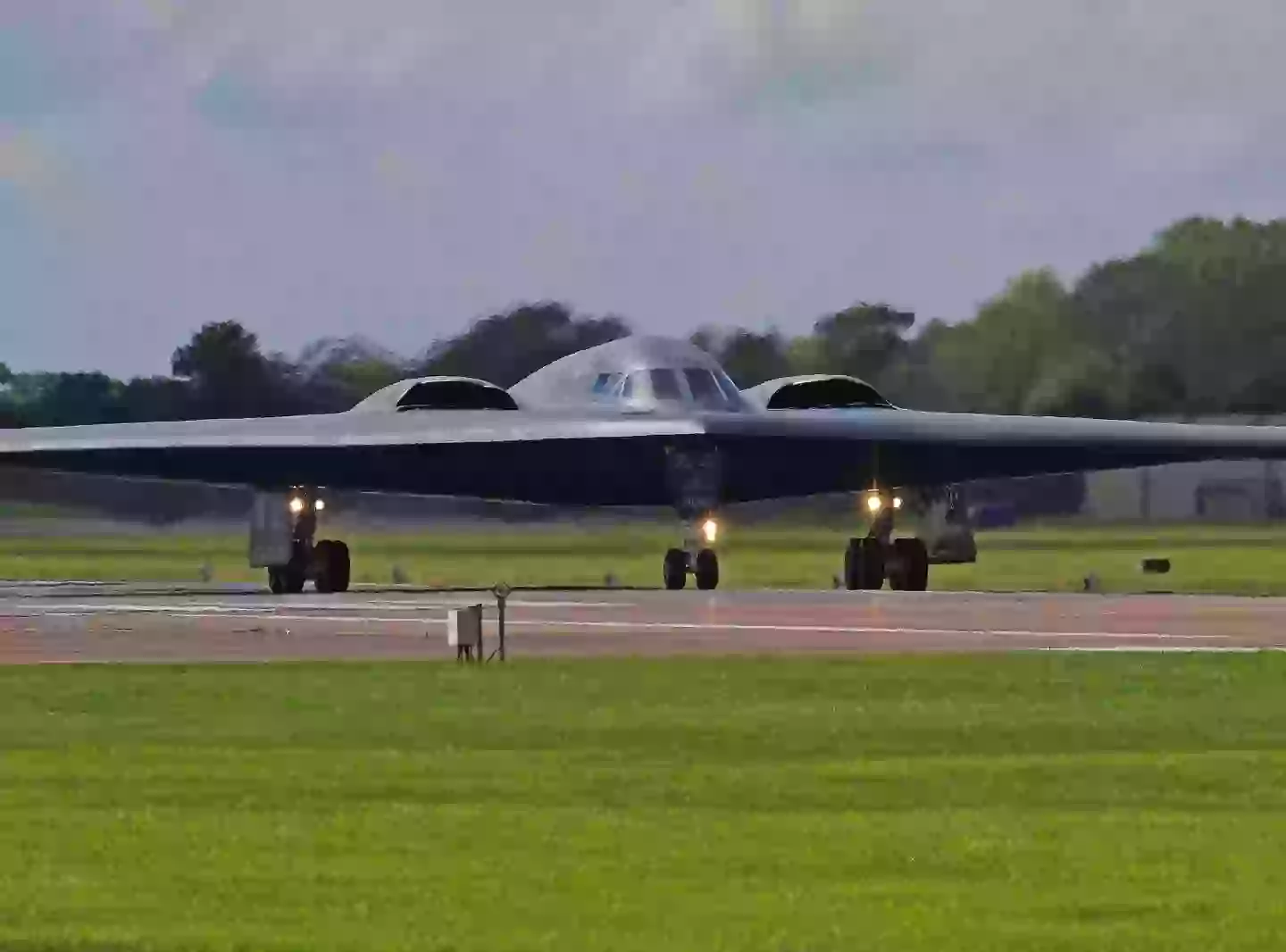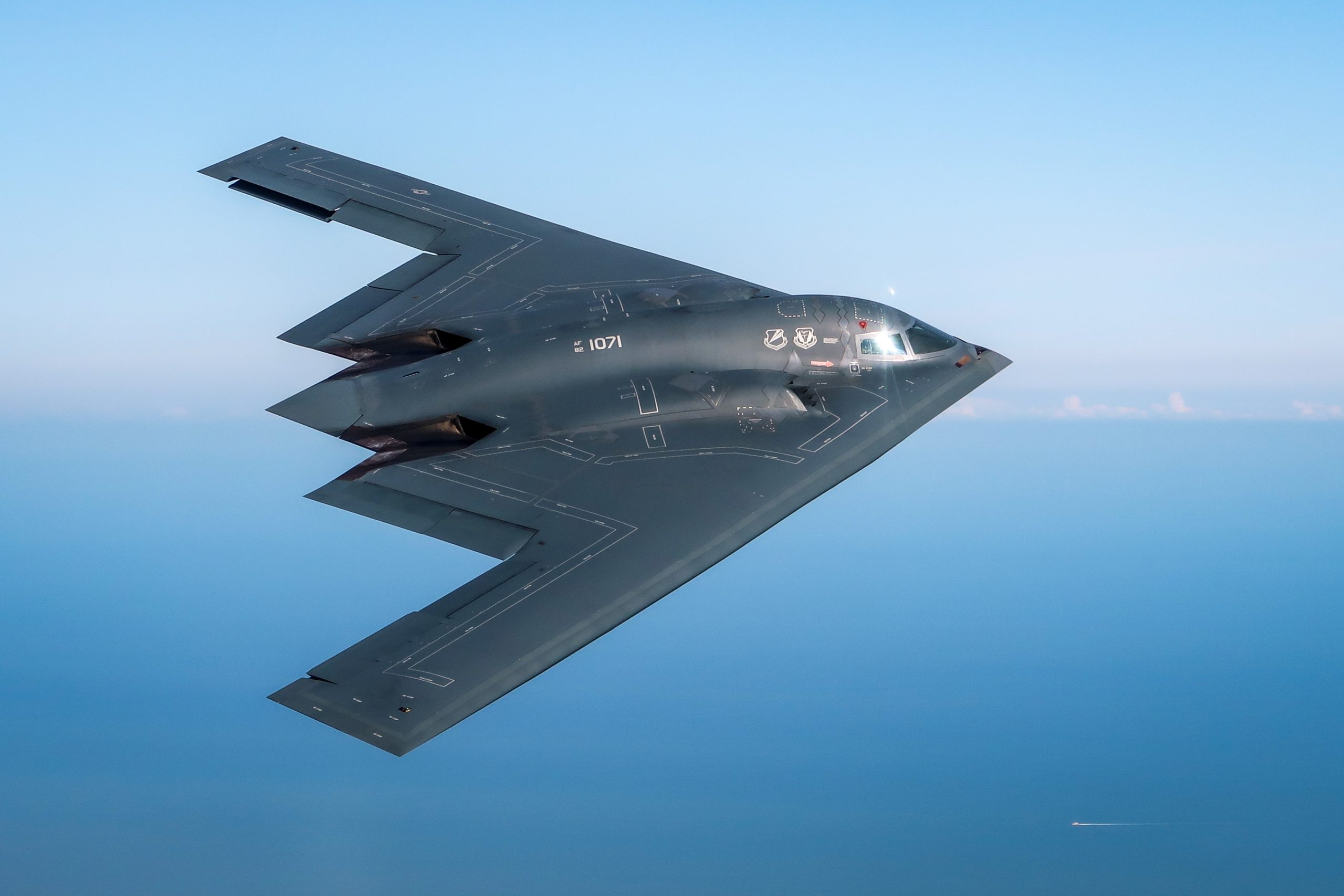B-2 Spirit Stealth Bombers: Advanced Military Technology Behind Operation Midnight Hammer
The World’s Most Expensive Military Aircraft in Action
The recent U.S. military operation against Iranian nuclear facilities showcased one of America’s most sophisticated and expensive military assets: the Northrop B-2 Spirit stealth bomber. These remarkable aircraft, each costing over $2 billion to develop and manufacture, represent the pinnacle of strategic bombing technology and played a crucial role in the weekend strikes against three Iranian nuclear installations.
The B-2 Spirit bombers utilized in Saturday evening’s operation against Iran have earned recognition as the most expensive military aircraft ever constructed, reflecting their unparalleled capabilities and advanced stealth technology. These strategic bombers possess unique operational characteristics that make them ideally suited for high-risk, long-range missions against heavily defended targets, particularly when conventional detection and interception risks must be minimized.
The aircraft’s extraordinary cost reflects not only their advanced technology but also the limited production run of just 21 operational bombers, making each unit a significant strategic asset that requires careful deployment consideration. The decision to utilize these premium military resources for the Iranian operation underscores the mission’s strategic importance and the administration’s commitment to employing the most capable available technology.
Exclusive Bunker-Busting Capabilities
The B-2 Spirit bombers possess the unique distinction of being the only aircraft capable of deploying the massive 30,000-pound “bunker-busting” bombs that were reportedly used against Iranian nuclear facilities. These Massive Ordnance Penetrator (MOP) weapons are specifically designed to destroy deeply buried and heavily fortified targets, making them ideal for neutralizing underground nuclear infrastructure.
The specialized nature of these weapons systems reflects the challenges posed by modern nuclear facilities, which are typically constructed with extensive underground protection and multiple layers of reinforced concrete and steel. Conventional bombing capabilities would prove insufficient against such targets, necessitating the deployment of both advanced delivery systems and specialized ordnance designed for maximum penetration and destructive capability.

Before and after satellite imagery has reportedly demonstrated the extensive destruction achieved by the U.S. strikes on Iranian nuclear sites, validating the effectiveness of both the B-2 delivery platform and the specialized weaponry employed during the operation. The successful penetration and destruction of these hardened targets represents a significant demonstration of American military technological superiority and strategic strike capabilities.
Operation Midnight Hammer: Complex Strategic Deception
The mission to strike Iranian nuclear facilities, designated “Operation Midnight Hammer,” involved sophisticated tactical deception designed to mask the true scope and direction of the bombing operation. This complex operational plan required careful coordination of multiple aircraft movements and the strategic use of decoy formations to misdirect international attention and intelligence gathering efforts.
The operational strategy involved dispatching a handful of B-2 bombers westward from Whiteman Air Force Base in Missouri as decoys, while the actual strike force proceeded eastward toward Iranian targets. This deception proved highly effective, with global attention focused on the decoy aircraft heading toward Guam while the actual strike force remained undetected during its approach to Iranian airspace.
The success of this deception operation demonstrates both the strategic planning capabilities of U.S. military commanders and the effectiveness of coordinated misdirection in modern warfare. The ability to conduct such operations “without the world knowing” until after mission completion represents a significant achievement in operational security and strategic surprise.
The highly classified nature of the operation required extensive coordination between multiple military commands and intelligence agencies to ensure operational security while maintaining the complex logistics necessary for long-range strategic bombing missions. This level of coordination reflects the sophisticated planning and execution capabilities that enable successful operations against distant, well-defended targets.
Extended Range Operations and In-Flight Refueling
The B-2 Spirit’s impressive operational range of approximately 7,000 miles enables long-distance missions without requiring forward basing arrangements that might compromise operational security or create diplomatic complications with host nations. However, the 18-hour journey from Missouri to Iranian targets required additional range extension through aerial refueling operations conducted during flight.
The round-trip mission duration of approximately 36 hours represents one of the longest bombing missions in military history, requiring careful planning for crew endurance, aircraft systems management, and multiple in-flight refueling operations. The ability to conduct such extended operations demonstrates both the aircraft’s robust design and the exceptional training and endurance capabilities of B-2 flight crews.
In-flight refueling operations during stealth missions present particular challenges, as the refueling process temporarily increases the aircraft’s radar signature and requires precise coordination with tanker aircraft. The successful completion of multiple refueling operations during the Iranian mission demonstrates the sophisticated coordination capabilities that enable extended-range stealth operations.
The logistical complexity of supporting such long-range missions extends beyond the primary aircraft to include tanker aircraft positioning, communication protocols, and contingency planning for emergency situations that might arise during extended operations over hostile territory.
Aircraft Interior Design and Crew Accommodations
Defense journalist Naveed Jamali, one of the few civilians to have observed the interior of B-2 bombers, has provided insights into the aircraft’s internal configuration and crew accommodations designed for extended operations. Despite the aircraft’s advanced technology and enormous cost, the interior prioritizes functionality over comfort, reflecting military design priorities focused on mission effectiveness rather than crew luxury.
The B-2’s two-person crew configuration allows for more spacious accommodations compared to other bomber aircraft, with sufficient room for essential crew needs during long-duration missions. The availability of space for sleeping bags enables crew members to rest in shifts during extended operations, ensuring that at least one pilot remains alert and capable of managing aircraft systems and navigation throughout the mission duration.
However, Jamali emphasized that despite the available space, the aircraft’s seating arrangements remain “incredibly uncomfortable,” reflecting the military’s prioritization of mission capability over crew comfort. The seats are designed for functionality and safety rather than extended comfort, requiring crew members to endure significant physical discomfort during missions lasting many hours.
The aircraft reportedly includes basic amenities necessary for extended operations, including toilet facilities and food preparation capabilities. Defense officials have confirmed the presence of a toilet, though it does not constitute a full bathroom facility. Reports also suggest the inclusion of a microwave for food preparation, enabling crew members to maintain nutrition during extended missions without compromising operational security.
Strategic Implications and Future Considerations
The successful deployment of B-2 Spirit bombers against Iranian nuclear facilities demonstrates America’s continued commitment to maintaining strategic strike capabilities that can reach any target globally with minimal warning and maximum effectiveness. This capability serves as both a tactical military asset and a strategic deterrent that influences international relations and conflict dynamics.
The operation’s success validates the significant investment in stealth technology and strategic bombing capabilities, demonstrating that these expensive military assets provide unique operational advantages that justify their extraordinary cost. The ability to strike heavily defended targets with minimal risk to American personnel represents a crucial capability for addressing emerging security threats.
However, the deployment of such premium military assets also raises questions about escalation management and the appropriate use of America’s most advanced military capabilities. The decision to utilize B-2 bombers against Iranian targets signals the seriousness with which the administration views Iranian nuclear development and its willingness to employ maximum available force to address perceived threats.
Presidential Warning and Escalation Dynamics
Following the successful completion of Operation Midnight Hammer, President Trump issued explicit warnings against Iranian retaliation, stating on Truth Social that “Any retaliation by Iran against the United States of America will be met with force far greater than what was witnessed [on Saturday].” This warning establishes clear escalation dynamics while attempting to deter Iranian counter-attacks.
The president’s public warning serves multiple strategic purposes: communicating resolve to Iranian leadership, reassuring American allies of continued commitment to regional security, and establishing clear expectations for consequences should Iran choose to retaliate. However, such explicit threats also create constraints on American flexibility and establish escalation thresholds that may prove difficult to manage if the crisis continues.
The combination of demonstrated military capability through the successful B-2 mission and explicit warnings about future consequences represents a classic approach to strategic deterrence, using both capability demonstration and credible threats to influence adversary decision-making.
Conclusion: Technology, Strategy, and International Relations
The deployment of B-2 Spirit stealth bombers in Operation Midnight Hammer represents a convergence of advanced military technology, sophisticated strategic planning, and high-stakes international relations. The mission’s success demonstrates America’s continued technological superiority and strategic reach while raising important questions about escalation management and conflict resolution in an increasingly complex international environment.
The extraordinary cost and capability of these aircraft reflect the ongoing American commitment to maintaining military technological advantages that enable global reach and strategic deterrence. However, the deployment of such advanced capabilities also highlights the challenges of managing international conflicts in an era where military technology enables rapid escalation and devastating consequences.
As tensions between the United States and Iran continue to evolve, the successful demonstration of American strategic strike capabilities through Operation Midnight Hammer will likely influence both nations’ strategic calculations and approach to future diplomatic and military interactions. The mission serves as both a tactical success and a strategic message about American capabilities and resolve in addressing perceived security threats.

Adrian Hawthorne is a celebrated author and dedicated archivist who finds inspiration in the hidden stories of the past. Educated at Oxford, he now works at the National Archives, where preserving history fuels his evocative writing. Balancing archival precision with creative storytelling, Adrian founded the Hawthorne Institute of Literary Arts to mentor emerging writers and honor the timeless art of narrative.
